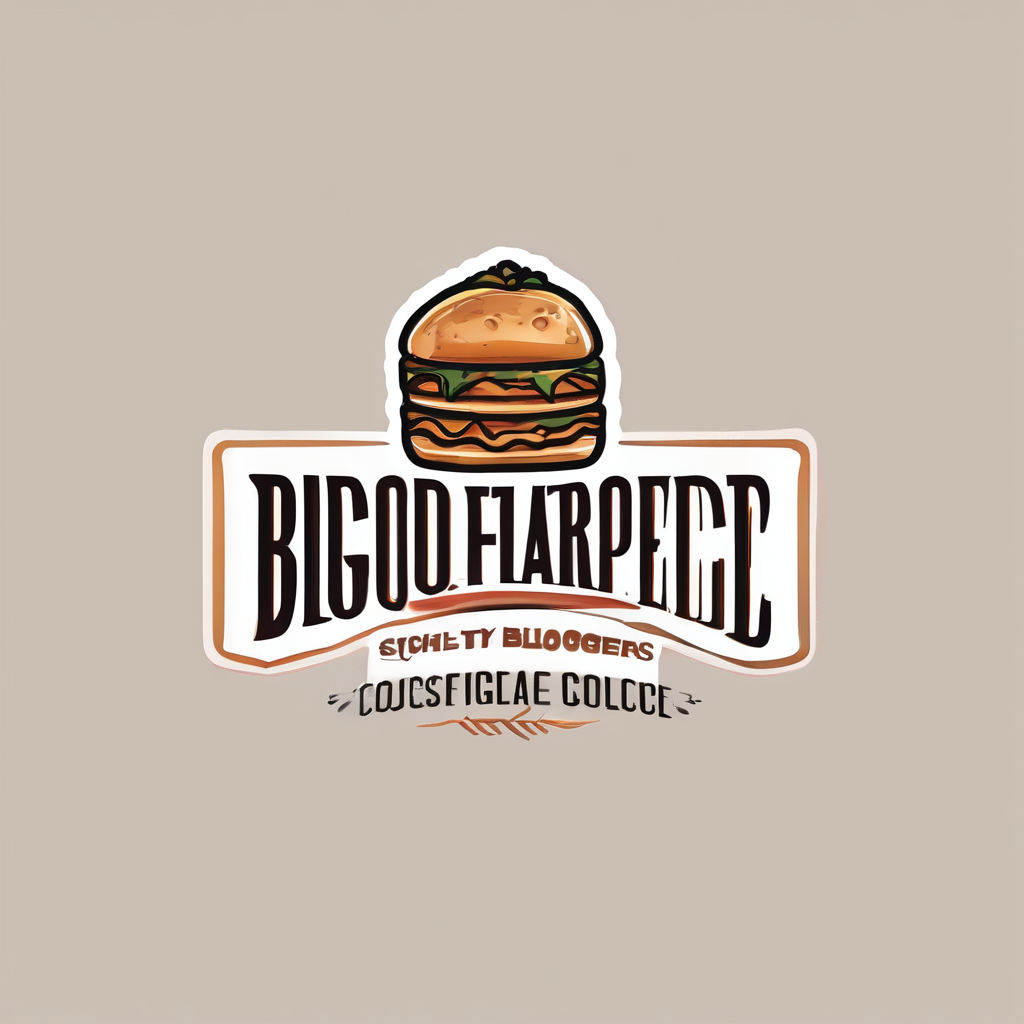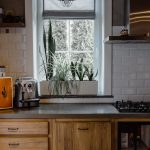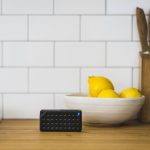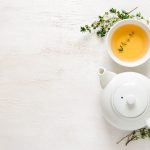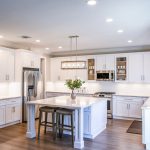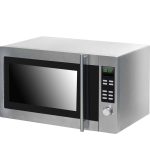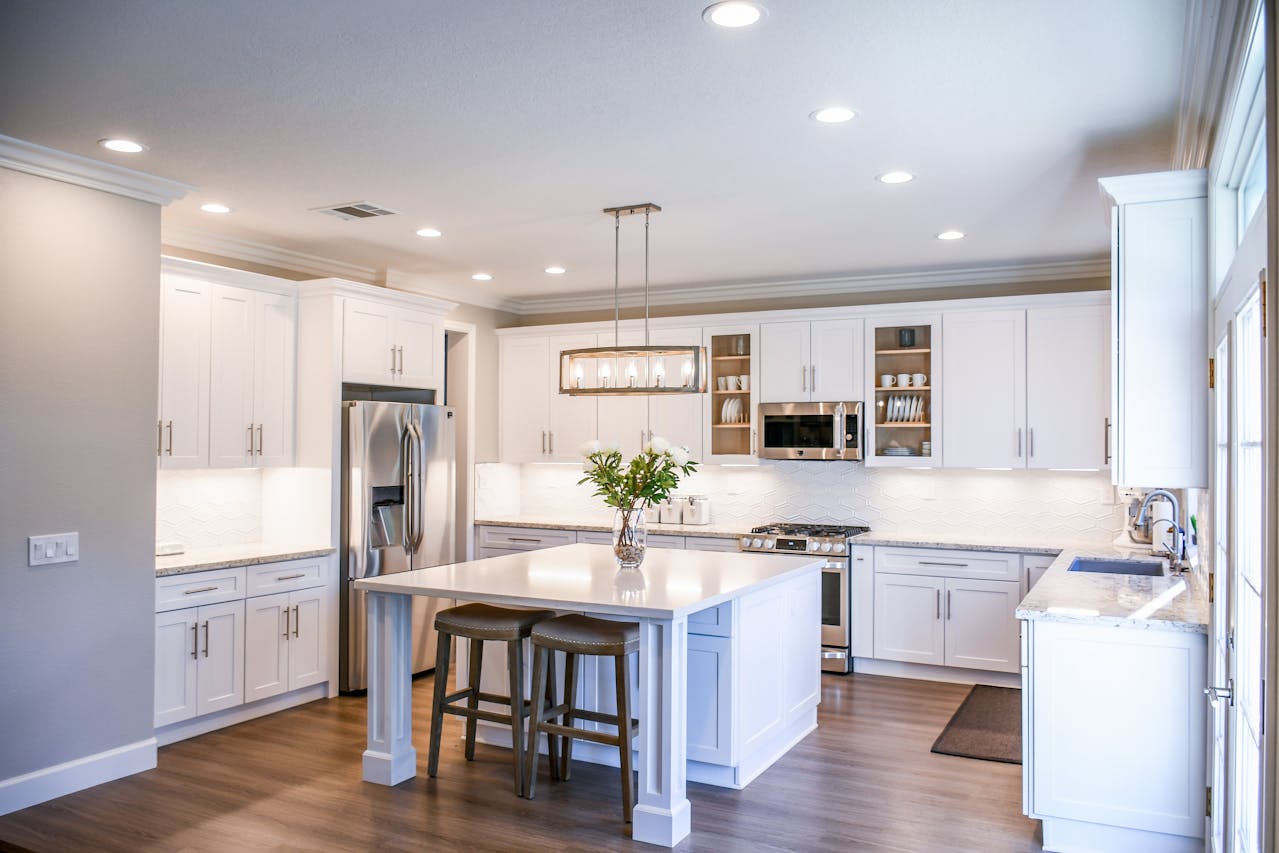Color influences more than just aesthetics; it impacts our emotions and behaviors. This connection becomes particularly interesting when examining kitchen cabinet colors and their correlation with mood and healthy eating habits. A vibrant kitchen can inspire creativity and joy, potentially leading to better food choices. Uncovering how different hues affect our psyche offers a refreshing perspective on designing kitchen spaces that nurture well-being. Let's explore how you can harness the power of color to positively transform your cooking environment and eating habits.
The Psychology of Color and Mood
Exploring the connection between colors and our emotions
Additional reading : Exploring the Impact of Minimalist Kitchen Decor on Your Food Portion Sizes
Overview of Color Psychology
Color Psychology is a fascinating field that explores how different hues can influence our emotions and behaviors. In the context of kitchen design, the choice of color can significantly impact the mood and ambiance of the space. For instance, warm tones like red and orange are known to stimulate appetite, making them popular choices for dining areas.
Emotional Responses to Colors
Colors have the power to evoke specific emotions. Blue, for instance, is often associated with calmness and serenity, while yellow can bring about feelings of happiness and energy. Consider the following effects:
This might interest you : Boost Your Calorie Burn: Transform Your Kitchen with a Bluetooth Speaker for Dance and Music Fun!
- Red: Increases energy levels and appetite.
- Green: Promotes relaxation and balance.
- Purple: Encourages creativity and luxury.
Studies on Color and Behavior
Research has shown that color choices can influence behavior, particularly in food consumption. A study found that people tend to eat more in environments where warm colors dominate. This insight can be used strategically in kitchen design to create spaces that are not only functional but also psychologically appealing.
In conclusion, understanding the psychology of color can be a powerful tool in creating a kitchen that not only looks good but also feels good, enhancing the overall experience of the space.
Impact of Kitchen Cabinet Colors on Eating Habits
Exploring the subtle influence of color in kitchen design
Influence on Appetite and Cravings
The colors of kitchen cabinets can subtly impact our eating choices. Warm tones like red or orange may increase appetite, leading to more frequent snacking. Conversely, cooler colors such as blue or green can suppress appetite, promoting healthier eating habits. This connection between kitchen design and eating habits is crucial for those looking to manage their diet through environmental cues.
Case Studies in Kitchen Transformations
Several case studies highlight how changing cabinet colors can influence eating habits. One study found that individuals who switched from red cabinets to blue reported a decrease in cravings for sugary snacks. Another transformation involved replacing yellow cabinets with green, leading to a preference for fresh produce over processed foods.
Practical Color Choices for Healthy Eating
When designing a kitchen with healthy eating choices in mind, consider these practical color selections:
- Blue: Reduces appetite, ideal for weight management.
- Green: Encourages consumption of vegetables and fruits.
- Yellow: Increases energy and may lead to overeating.
These examples demonstrate how thoughtful kitchen design can align with dietary goals, making color selection a strategic tool for healthier living. By understanding the psychology of colors, homeowners can create spaces that support their desired lifestyle.
Popular Color Palettes for Kitchen Cabinets
Discover the latest trends in kitchen design
Trending Color Palettes
The world of kitchen color schemes is ever-evolving, with certain palettes gaining popularity for their ability to transform spaces. This year, a fusion of earthy tones and bold hues is making waves. Cabinet colors like deep navy, sage green, and soft taupe are favored for their versatility and timeless appeal. These choices not only enhance the kitchen's aesthetics but also influence the mood of the space.
Mood-Enhancing Colors
Each color carries its own emotional weight. For instance, navy blue exudes sophistication and calm, while sage green brings a sense of tranquility and freshness. Taupe offers a neutral backdrop that complements various styles. These cabinet colors can create a welcoming and serene environment, making the kitchen a favorite gathering spot.
Recommended Combinations
To achieve a harmonious kitchen ambiance, consider these kitchen color schemes:
- Navy Blue and White: Classic and elegant
- Sage Green and Wood Tones: Natural and calming
- Taupe and Gold Accents: Warm and inviting
These combinations not only enhance the kitchen's visual appeal but also align with the desired emotional experience. By selecting the right cabinet colors, homeowners can craft a space that is both functional and emotionally resonant.
Expert Insights on Color Selection
Expert opinions reveal the nuances of color choices in kitchen design.
Importance of Color in Kitchen Spaces
Design experts emphasize the transformative power of color in kitchen spaces. According to interior designer Jane Smith, “Colors can set the tone for how we feel and interact in a room.” This insight underlines the importance of thoughtful color consultation when planning a kitchen makeover. The right hues can enhance both the functionality and emotional appeal of the space.
Recommendations for Choosing Cabinet Colors
When selecting cabinet colors, experts suggest considering lifestyle and personal preferences. For instance, if you love cooking and entertaining, vibrant colors like red or yellow can energize the space. Alternatively, if you prefer a calming atmosphere, shades of blue or green are recommended. Here are some expert tips:
- Assess Lifestyle: Choose colors that match daily routines.
- Consider Lighting: Natural light can alter color perception.
- Balance with Decor: Ensure colors complement existing elements.
Long-term Effects of Color Choices
The long-term effects of color choices are significant. As design expert Michael Lee notes, "The right color palette can increase the longevity of a kitchen's aesthetic appeal." Opting for timeless colors like navy or taupe can ensure your kitchen remains stylish for years. Engaging in color consultation can provide clarity and confidence in these decisions.
The Role of Light in Kitchen Color Perception
Exploring the interplay between lighting and color perception in kitchen design
Lighting Effects on Cabinet Colors
Natural and artificial lighting significantly influence how we perceive kitchen cabinet colors. Sunlight can enhance the vibrancy of colors, making them appear warmer and more inviting. On the other hand, artificial lighting, such as LED or fluorescent, can alter the hue, sometimes making colors seem cooler or more subdued. Understanding these lighting effects is crucial when selecting colors to ensure they complement the kitchen's overall ambiance.
Optimizing Lighting for Mood Enhancement
To enhance the mood set by your chosen cabinet colors, consider these lighting tips:
- Use Dimmer Switches: Adjust lighting intensity to match the desired atmosphere.
- Layer Lighting: Combine ambient, task, and accent lighting for a balanced effect.
- Select Bulb Color Temperature: Warm bulbs (2700K-3000K) enhance cozy tones, while cool bulbs (5000K-6500K) highlight modern aesthetics.
Impact of Varied Lighting on Color Perception
Different kitchens showcase the impact of varied lighting effects on color perception. For instance, a kitchen with large windows may benefit from natural light that highlights earthy tones, while a space with limited light might require strategic artificial lighting to maintain the intended color scheme. By understanding the role of lighting, homeowners can create a visually appealing and emotionally resonant kitchen environment.
Color Theory and Its Application in Kitchen Design
Understanding the fundamentals of color can transform your kitchen space.
Basic Principles of Color Theory
Color Theory is an essential aspect of kitchen design principles, providing a framework for creating aesthetically pleasing spaces. At its core, it involves the color wheel, which helps designers understand relationships between hues. Complementary colors, such as blue and orange, create visual interest, while analogous colors, like green and yellow, offer harmony.
Applying Color Theory in Kitchen Design
To achieve a balanced and inviting kitchen, apply color theory strategically. Start by selecting a primary color to set the tone, then incorporate secondary and accent colors to enhance depth. For instance, a kitchen with navy blue cabinets can be complemented by brass fixtures and white countertops to create a sophisticated look.
Examples of Successful Kitchen Designs
Several kitchens exemplify the effective use of color theory:
- Monochromatic Scheme: A kitchen using various shades of gray can appear sleek and modern.
- Triadic Scheme: Combining red, yellow, and blue can create a vibrant, energetic space.
- Neutral Palette: Incorporating whites, beiges, and browns offers timeless elegance.
By understanding and applying color theory, homeowners can craft a kitchen that not only looks appealing but also aligns with their personal style and functional needs.
Visual Appeal: Imagery and Inspiration
Exploring kitchen inspiration through visual design
Curated Gallery of Kitchen Cabinet Color Examples
Discovering the perfect kitchen inspiration can be an exciting journey. A well-curated gallery of kitchen cabinet color examples can provide a wealth of ideas. By examining various styles and palettes, you can find the visual design that resonates with your taste. Consider the following popular color combinations:
- Navy Blue and Brass: Combines sophistication with warmth.
- Sage Green and Wood Accents: Offers a natural, calming atmosphere.
- White and Black: Provides a classic, timeless contrast.
Analysis of Imagery Showcasing Successful Color Implementations
Analyzing imagery of successful color implementations can offer valuable insights into effective visual design. Look for images that highlight how colors interact with lighting and space. This analysis can guide you in selecting colors that enhance your kitchen's ambiance.
Tips for Finding Inspiration in Design Magazines and Online Platforms
Finding kitchen inspiration is easier with the right resources. Design magazines often feature the latest trends in visual design, showcasing innovative color schemes. Online platforms like Pinterest and Instagram can also be treasure troves of ideas. Save images that speak to your style, and use them as a reference when planning your kitchen makeover. Engaging with these resources can spark creativity and confidence in your design choices.
Case Studies: Transformative Kitchen Makeovers
Exploring the impact of color in kitchen renovations
Detailed Case Studies
In the realm of kitchen renovations, cabinet color choices can redefine a space. One notable case involved a family who transformed their outdated kitchen with a fresh coat of soft sage green. The change not only modernized the look but also introduced a calming atmosphere, aligning with their desire for a tranquil cooking space.
Homeowner Testimonials
Homeowners often express profound emotional impacts following these kitchen renovations. One homeowner noted, "The transition from dark mahogany to bright white cabinets made our kitchen feel twice the size and brought a sense of peace and openness." Such testimonials highlight how color can influence not just aesthetics but also emotional well-being.
Key Takeaways
- Color Choice: Opt for hues that align with desired mood and functionality.
- Emotional Impact: Consider how colors affect feelings and interactions.
- Practicality: Ensure colors are easy to maintain and complement other elements.
These case studies illustrate the transformative power of color in kitchen renovations. By focusing on cabinet colors, homeowners can achieve a space that not only meets functional needs but also enhances emotional satisfaction. Through thoughtful design, a simple color change can lead to a profound transformation.
Integrating Color Choices with Overall Kitchen Design
Creating a seamless and inviting kitchen environment
Strategies for Cohesive Design
Ensuring your cabinet colors complement other kitchen elements is crucial for achieving a cohesive design. Start by considering the existing materials, such as countertops, flooring, and appliances. A harmonious color integration can be achieved by selecting hues that either match or contrast effectively with these elements. For example, pairing dark wood cabinets with light stone countertops can create a balanced visual appeal.
Importance of Cohesive Design
A cohesive design is essential for creating an inviting atmosphere in your kitchen. When all elements, including cabinet colors, work together, the space feels more unified and welcoming. This approach not only enhances kitchen aesthetics but also improves functionality by creating a visually pleasing environment that encourages interaction and enjoyment.
Examples of Harmonious Color Integration
Consider these examples of kitchens with successful color integration:
- Neutral Cabinets and Bold Backsplash: Soft taupe cabinets paired with a vibrant, patterned backsplash.
- Monochromatic Scheme: Various shades of blue used across cabinets, walls, and decor.
- Natural Tones: Sage green cabinets with wooden accents and beige countertops.
These examples showcase how thoughtful color choices can elevate kitchen aesthetics and contribute to a cohesive design. By focusing on harmonious color integration, you can create a kitchen that is both functional and visually appealing.
Future Trends in Kitchen Cabinet Colors
Exploring the next wave of design trends in kitchen aesthetics
Emerging Trends in Kitchen Cabinet Colors
The future of kitchen design trends is set to embrace a blend of future colors that bring both innovation and sustainability. As homeowners increasingly seek personalized spaces, expect to see a rise in bold color choices such as deep emeralds and rich terracottas. These hues not only add depth but also a sense of luxury and uniqueness to the kitchen environment.
Predictions for Color Psychology in Future Kitchens
Color psychology will continue to play a pivotal role in shaping future kitchen aesthetics. Designers predict a shift towards colors that promote well-being and mindfulness. Soft pastels and earthy tones are anticipated to dominate, reflecting a desire for serene and calming spaces. This trend aligns with the growing emphasis on creating environments that enhance mental health and emotional balance.
Sustainable and Eco-Friendly Color Choices
Sustainability is increasingly influencing kitchen design trends. Expect a surge in eco-friendly color choices, with natural dyes and low-VOC paints becoming popular. These options not only reduce environmental impact but also support healthier indoor air quality.
- Natural Dyes: Derived from plant-based sources
- Low-VOC Paints: Minimize harmful emissions
- Recycled Materials: Promote resource conservation
By integrating these future colors, homeowners can achieve a stylish yet environmentally conscious kitchen.
